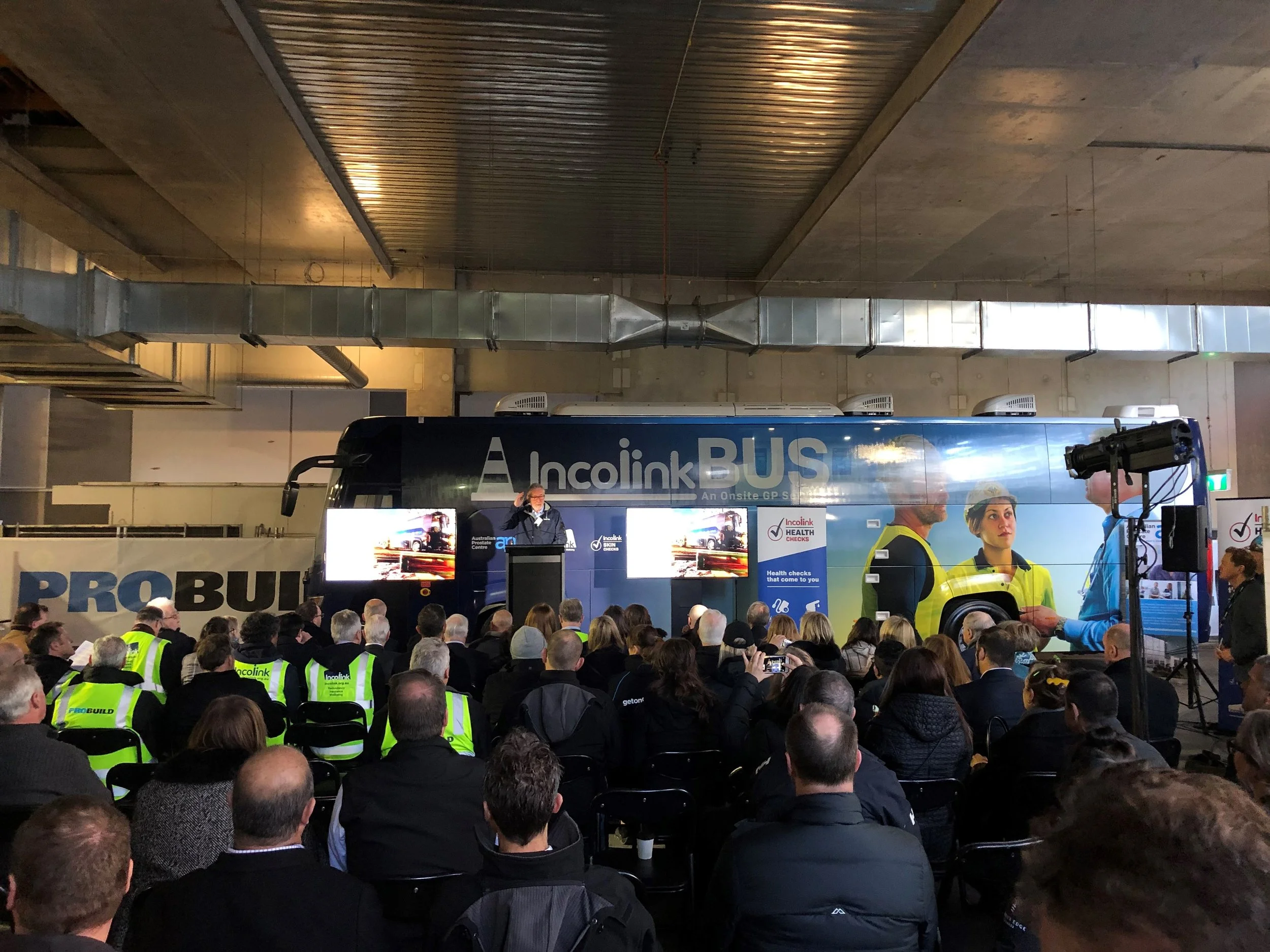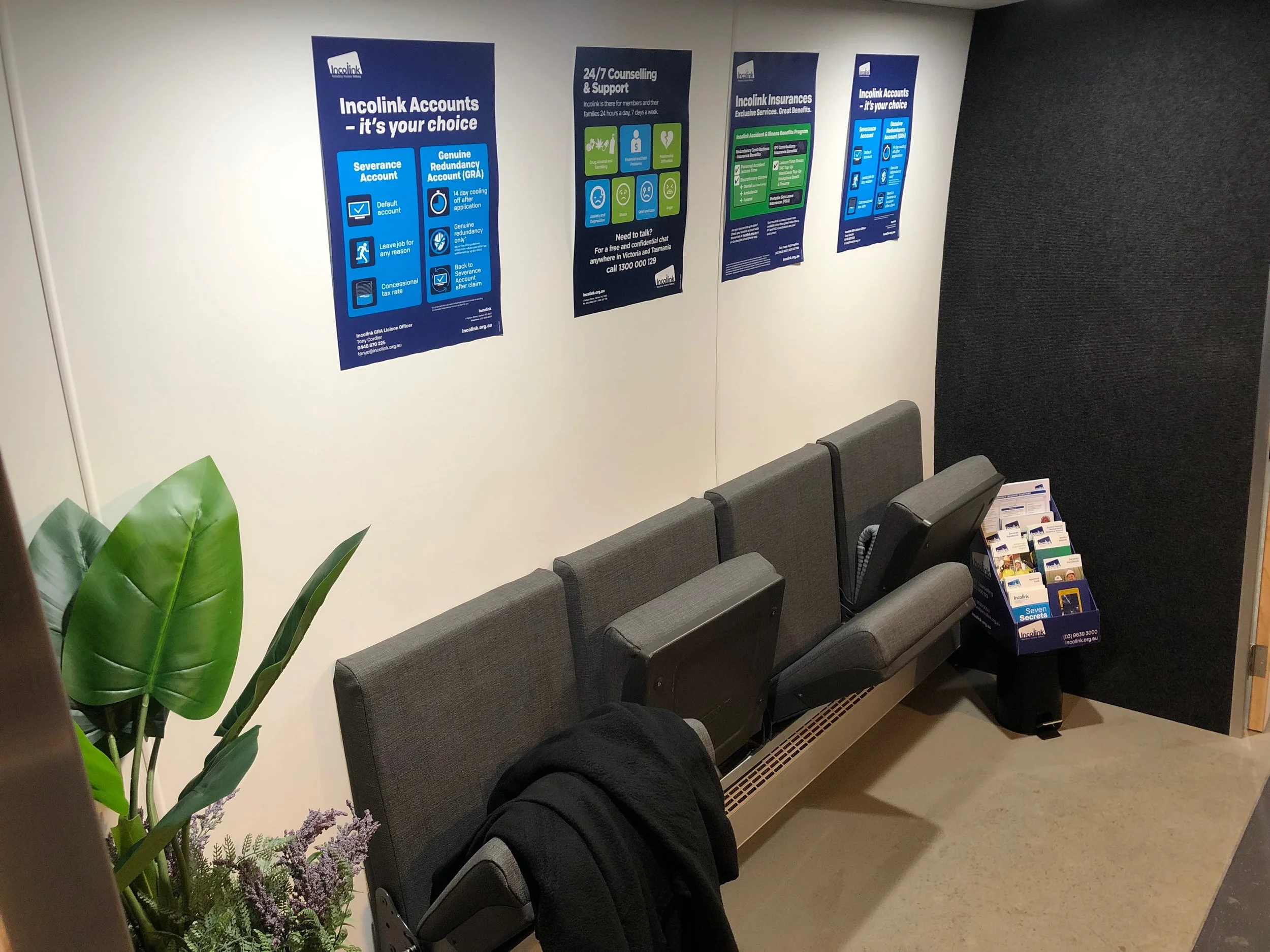The cost of ill health.
Work demands getting in the way of making time to extend your life by 20 years?
Far too often we hear “it’s just a cold” or “I’ll be right, I’ll get over it eventually”. Unfortunately the grim reality of the construction industry is that the 10, sometimes 12, hour working days, six days a week provide a challenge to visiting the doctor for a little niggle here or there. And let’s be honest, regardless of time constraints, many of us avoid the doctor like we avoid someone with a cold.
Chronic illnesses (including cancer, cardiovascular disease, mental health, arthritis, back related issues, chronic obstructive pulmonary disease, asthma and diabetes) are Australia’s leading cause of ill health. One in two Australians live with at least one, one in four Australians live with two or more, and they account for 87% of all deaths.
Chronic illnesses not only impact the individual, they place significant financial burden on the healthcare system and employers.
In 2017 Australian employees took an average of nine sick days off work. This absenteeism cost the Australian economy an estimated $44 billion. On top of this, some of us think we are doing the right thing heading into work when we’re sick, rather than attending the doctor for treatment. To some, the thought of staying home to “rest it off” or even to avoid infecting our colleagues, is a foreign concept. Attending work when sick is a form of presenteeism. Presenteeism is costing employers an estimated $35 billion annually.
As employers became more aware of the economy impact of poor health, workplaces started to design and implement their own health and wellbeing programs. These programs flourished, the breadth of their implementation is far and wide. The Sloan Work and Family Research Network noted that these programs yield quantifiable bottom line benefits to organisations, by increasing productivity and attendance, improving retention and recruitment and reducing workers compensation costs. However, the research is not absolute that health and wellbeing programs are marking a significant difference to the health and wellbeing of individuals. This is based on the inconsistent tool used to measure wellness, and additionally, only 10% of organisations use an external provider with specialised knowledge and experience to measure wellness.
Admittedly, I’m one of the 90% who implemented a health and wellbeing program and used internal metrics to measure its effectiveness. This report, and reflection on my own behaviours, got me thinking, should we continue to design and implement health and wellbeing programs, or should we leave it to the experts?
Self-medicating.
The Australian Institute of Health and Welfare 2018 report summaries that our health and wellbeing is influenced in two ways: determinants and intervention. For health and wellbeing programs to be successful in the workplace, it is important to understand how people make decisions relating to their health and wellbeing.
Determinants are our personal values and beliefs as they relate to health. Determinants include our socioeconomic status, our environment, and other external factors, like social media. These factors influence our approach to health and wellbeing. By way of example, people living in rural areas may not have immediate access to medical services, or financial hardship may prevent us from seeking medical treatment, or personal beliefs such as not being immunised . . . and then there’s social media: an Instagram post of someone working out or a television advertisement for vitamins can influence our overall state of being.
Intervention is what we actually do to improve our health, e.g. exercise, immunisation and health and wellbeing programs. Health and wellbeing programs are generally developed to improve our health and wellbeing to prevent the onset of chronic illnesses. These programs are typically voluntary, focusing on lifestyle factors. The uptake of intervention is influenced by our determinants.
Employer intervention.
For decades, organisations have invested time, money and resources into preventing workplace incidents, and making physical workplaces safer. As workplaces have evolved in response to the cost of absenteeism, employers have made it their moral duty to help improve employees’ health and wellbeing. What once may have been a viewed as a waste of time or “not our problem”, is now featured heavily in organisations’ strategic plans and value proposition.
Similar to managing health and safety risks, there is a hierarchy of control for health promotion. Put simply, there are three tiers to promoting the management of wellness:
1. Primary Prevention: aims to prevent the onset of illness or injury before the disease process begins, e.g. education and awareness around smoking, eating habits and immunisation programs.
2. Secondary Prevention: aims to prevent the progress of illness and disease through early screening and detection programs, e.g. breast screening, bowel screening, diabetes checks.
3. Tertiary Prevention: aims to reduce to consequence of an established disease by reducing its progression and improving quality of life, e.g. rehabilitation programs.
Typically an archaic industry not known for leading change, when it comes to looking after people, the construction industry bodies have rallied around their own, creating primary and secondary prevention programs via Mates in Construction and Incolink Worker Health Checks.
Aside from these programs, and not limited to construction companies, organisations globally are now the architects of their own bespoke health and wellbeing programs. Typically, these programs are determinant primary prevention programs, focusing on raising awareness and educating employees on a specific health issue – e.g. mental health, work life balance. Generally, these programs are funded by the employer, can be led and coordinated internally or via a professional service consultant, and do not usually require a medical professional, for example, bootcamps or nutrition classes.
Thinking about the people we are providing these health and wellbeing programs for, we want to capitalise on the limited time we have with them. So, I ask my “busy” self, would I want to spend four hours being educated on a health issue or just 15 minutes having a test done to tell me if there is a problem?
Health and wellbeing programs have come a long way. In the 1980s and 90s there was the introduction of employee assistance programs, in the 2000s employers became more aware of employee needs and introduced health and wellbeing programs.
When I take a step back and review workplace health and wellbeing programs, it’s obvious to me that we have unintentionally been trying to do the jobs of medical professionals.
I question, what can we do to improve on this and ensure we are providing programs that are useful to the employee and provide a return on investment to the employer?
Imagine a workplace where a doctor or nurse was engaged as part of the health and wellbeing program. A meeting room, permanently set up as a doctor’s clinic, where an employee can simply schedule an appointment just like they schedule an internal meeting. The doctor would be engaged to conduct preventative health screening. Would it be a bold move for employers to redirect the funds from the traditional primary prevention health and wellbeing programs to engage medical professionals?
Knowing that similar arrangements already exist on a short term basis (with occupational nurses, doctors and psychologist employed) in other industries such as mining, should we be trying to leverage this and create an adaptable model for the construction industry?
Could having such resources directly employed assist with not only providing screen and health monitoring, but also developing awareness and educational programs, specifically tailored to the workplace health profile, delivered by trained medical professionals?
Are you on the bus?
You can stop imagining. Two weeks ago, I was fortunate to attend something game changing – the launch of the Incolink Bus - an on site GP service that conducts health checks by medical practitioners. Incolink is a joint enterprise of employer associations and industry unions in Victoria and Tasmania. Dan O’Brien, Incolink CEO, summarised the bus as “a mobile service that can be established at any construction site, providing an opportunity for construction workers to have a health check with no impact to their life. No kids to pick up, no cost to attend the bus and most importantly it is employer supported.”
If during the appointment the practitioner identifies a health concern, they discuss the issues with the patient and map out a treatment plan and necessary referrals.
The Incolink Bus is fitted out with two private soundproof consulting rooms and a waiting room. The bus’ first stop was at a Probuild Construction site - 311 Spencer Street where there are currently 600 construction workers on site. Of those 600 workers, statistics tell us that there are potentially 100 with a health issue. It is reassuring to know, that for the three days the bus was on site, the doctors were fully booked with 240 appointments. If the bus was not on site, I wonder just how many of these workers would have attended their local medical clinic during that three day period? The uptake in this program demonstrates that by making health solutions accessible and convenient, people will engage and make their health a priority.
Is this bus the magic pill we have been looking for? At around $600,000 on road costs, this bus is one of kind.
What would you prescribe?
Back at my desk after the launch, I thought, have we been doing health and wellbeing programs wrong? Instead of spending the allotted monies on primary prevention programs, are we better off employing medical practitioners to undertake this for us? Could an on site psychologist assist with detecting and dealing with mental health issues sooner rather than later? Would having a doctor in the office encourage employees to have that health check they have been putting off? I’m not suggesting we throw the baby out with the bathwater when it comes to health and wellbeing programs, however if were to prioritise the spend, would we better serve our employees by providing them with the services that they need and then place an emphasis on awareness and education?



